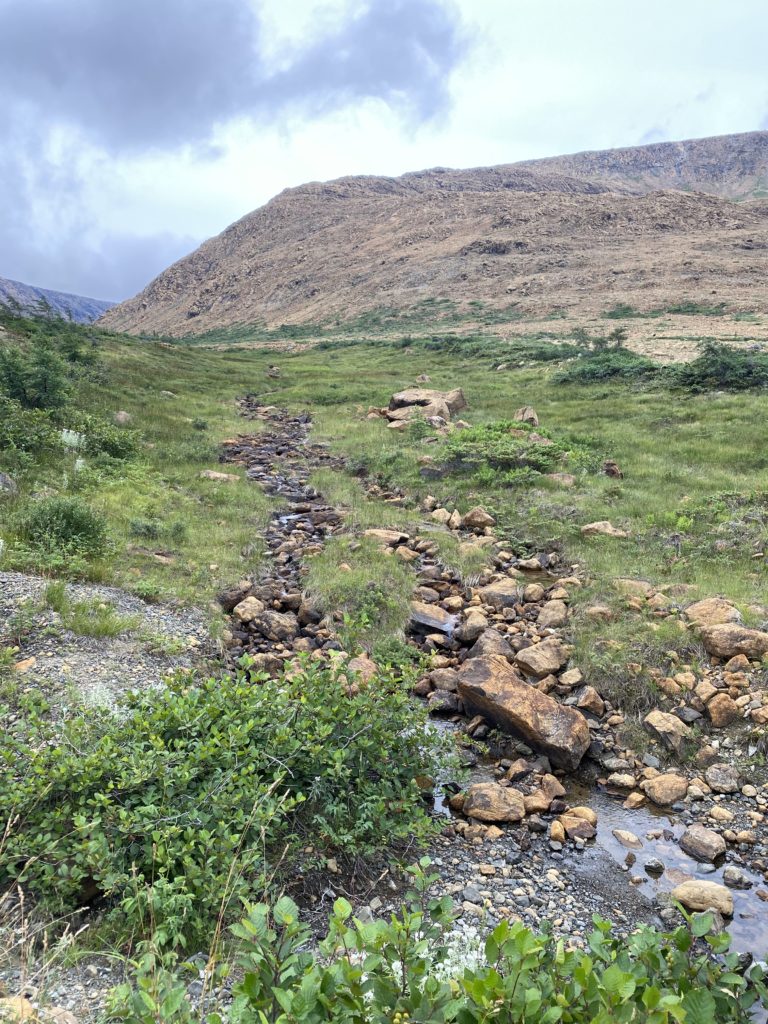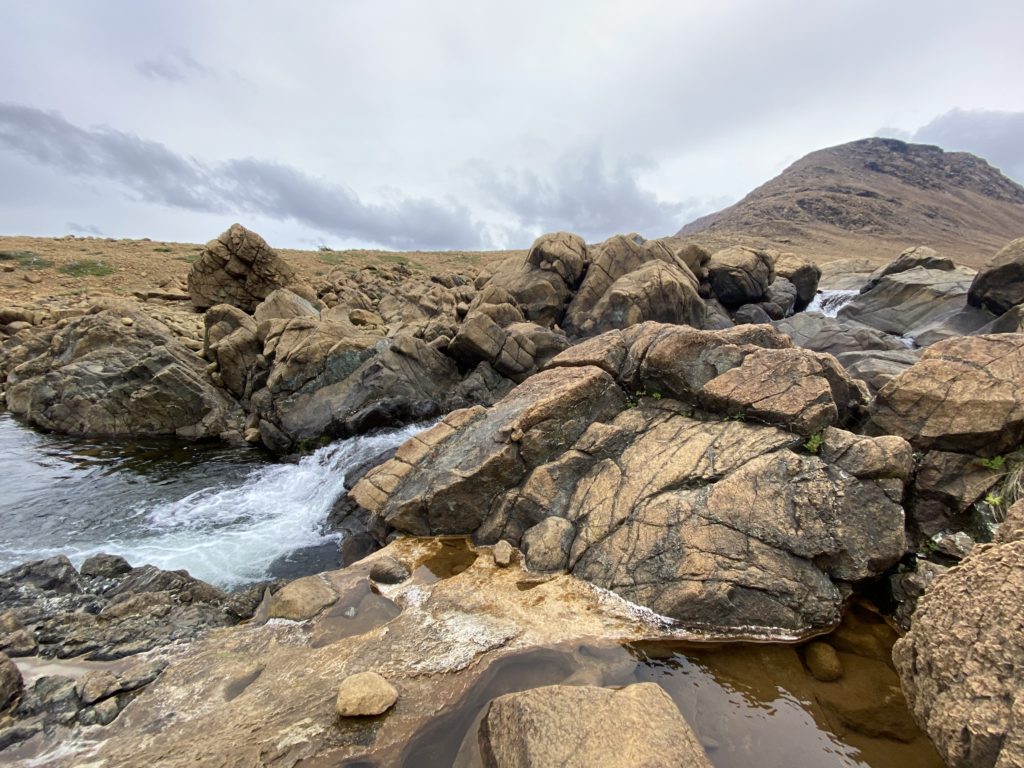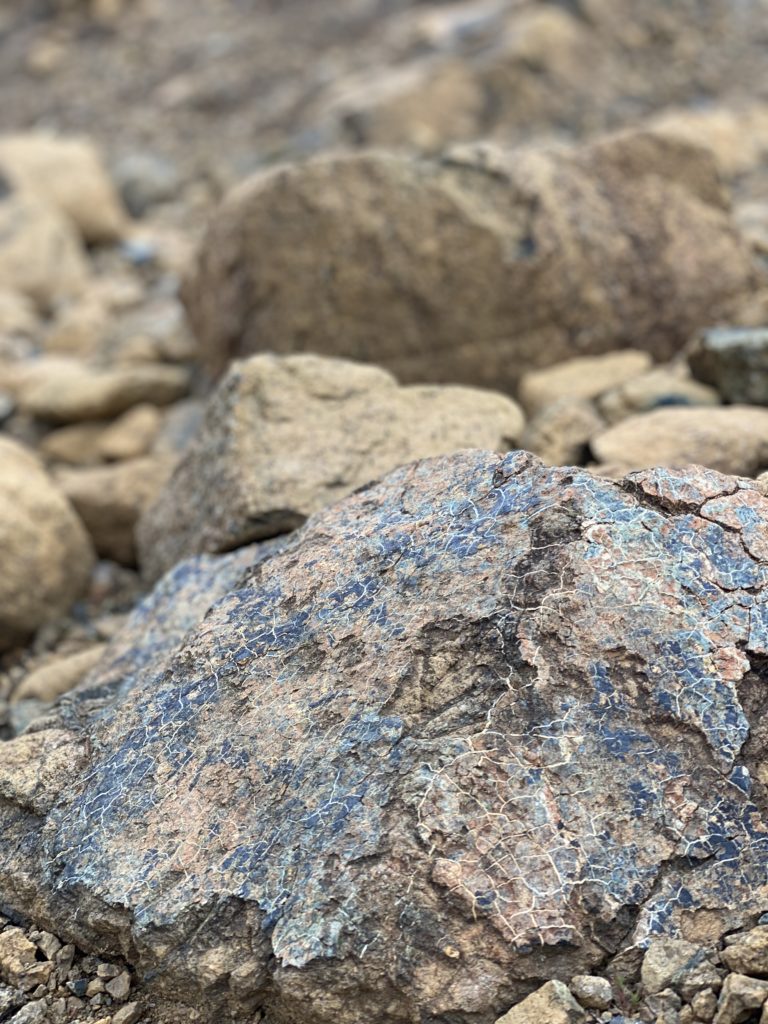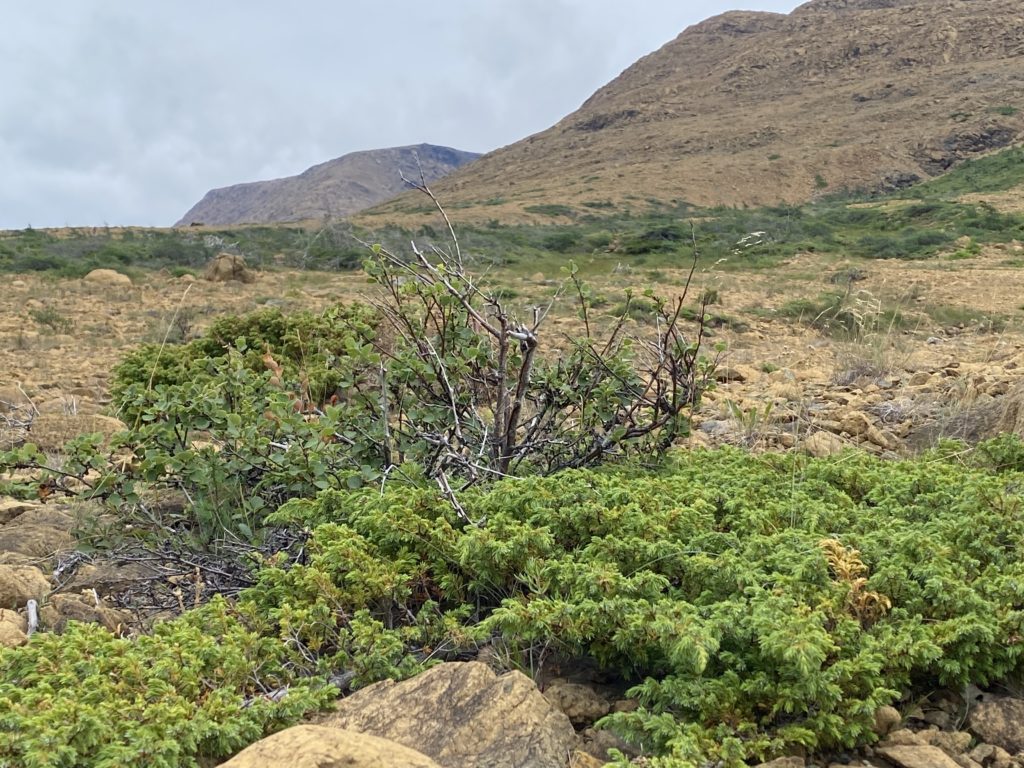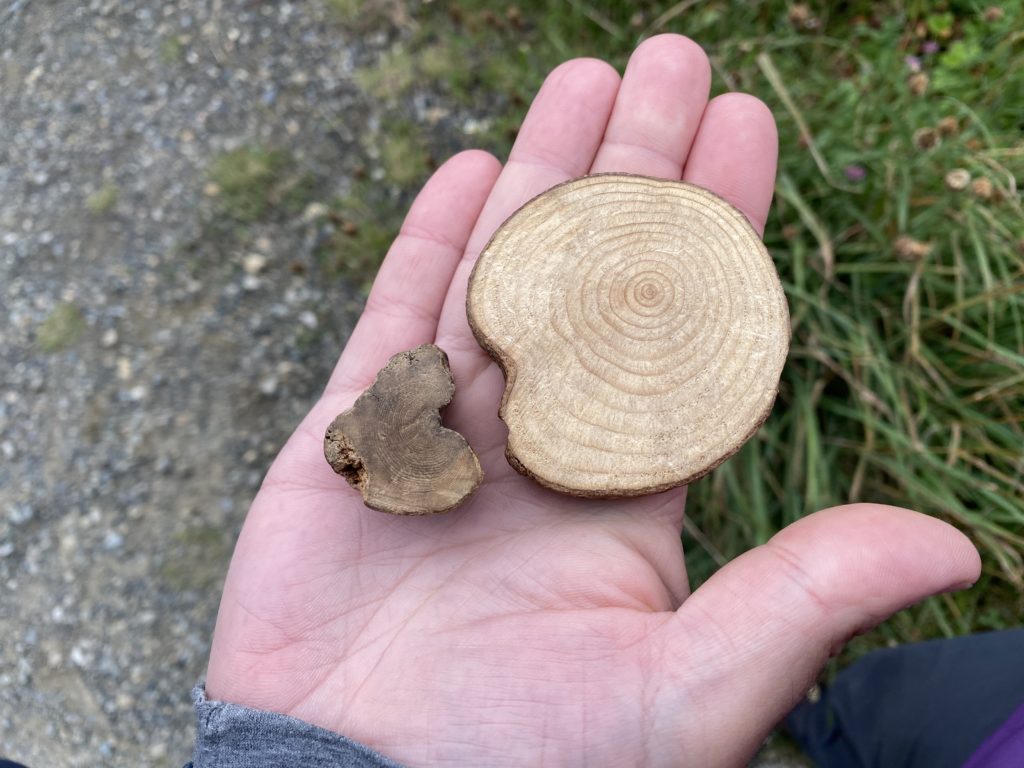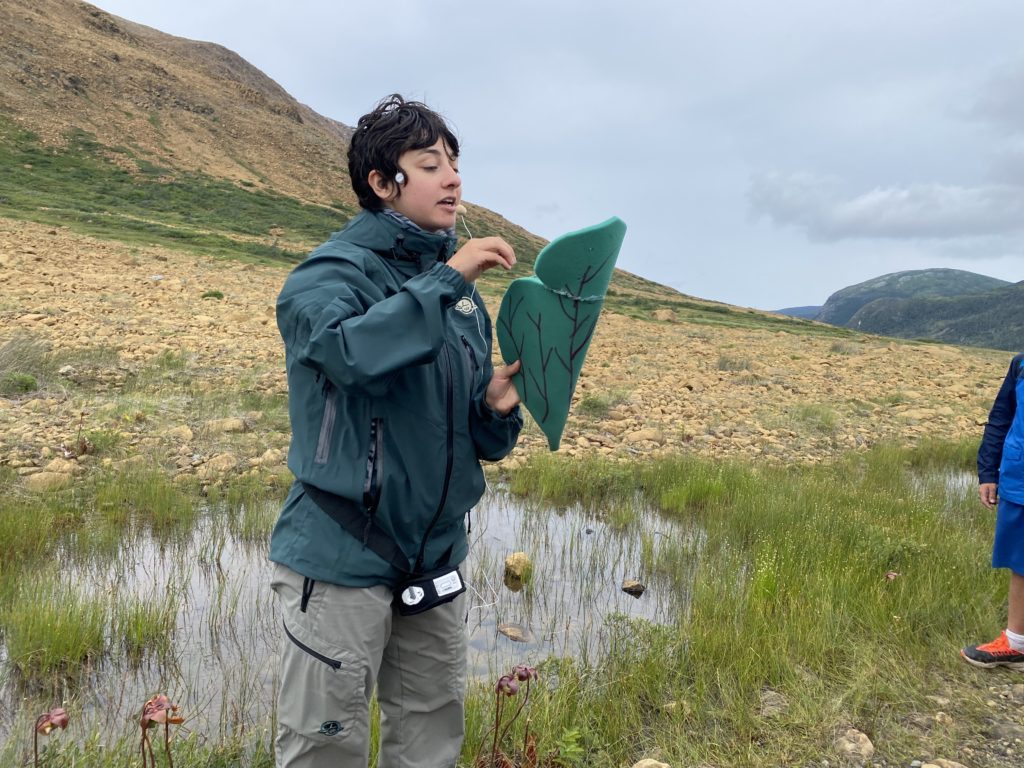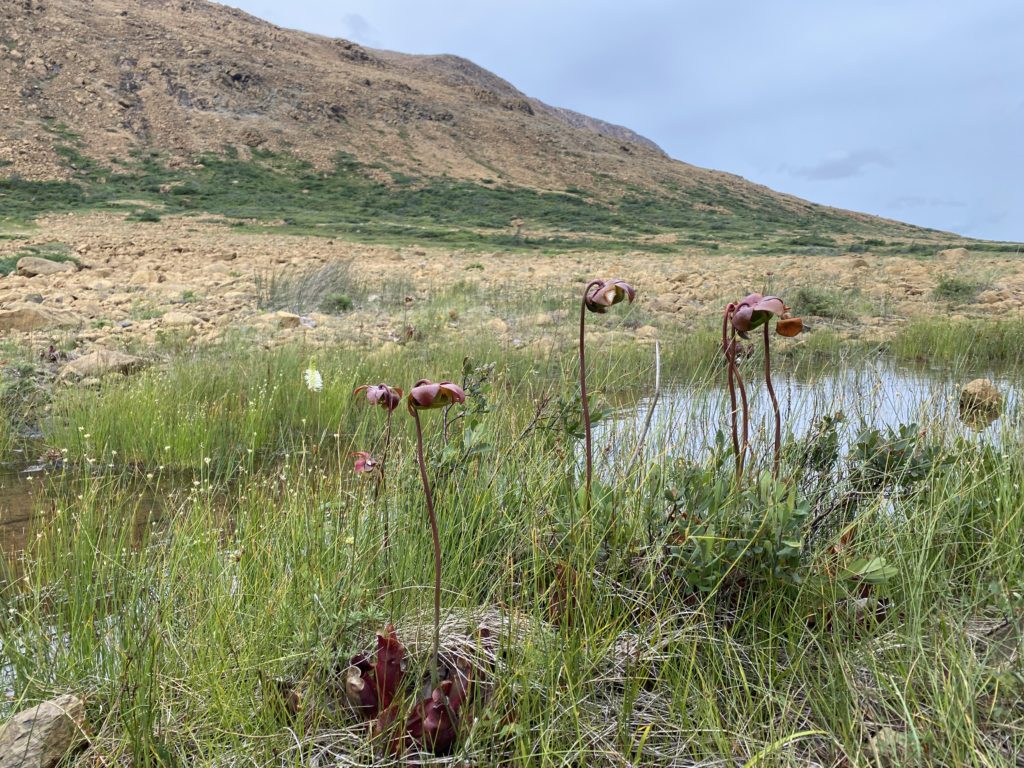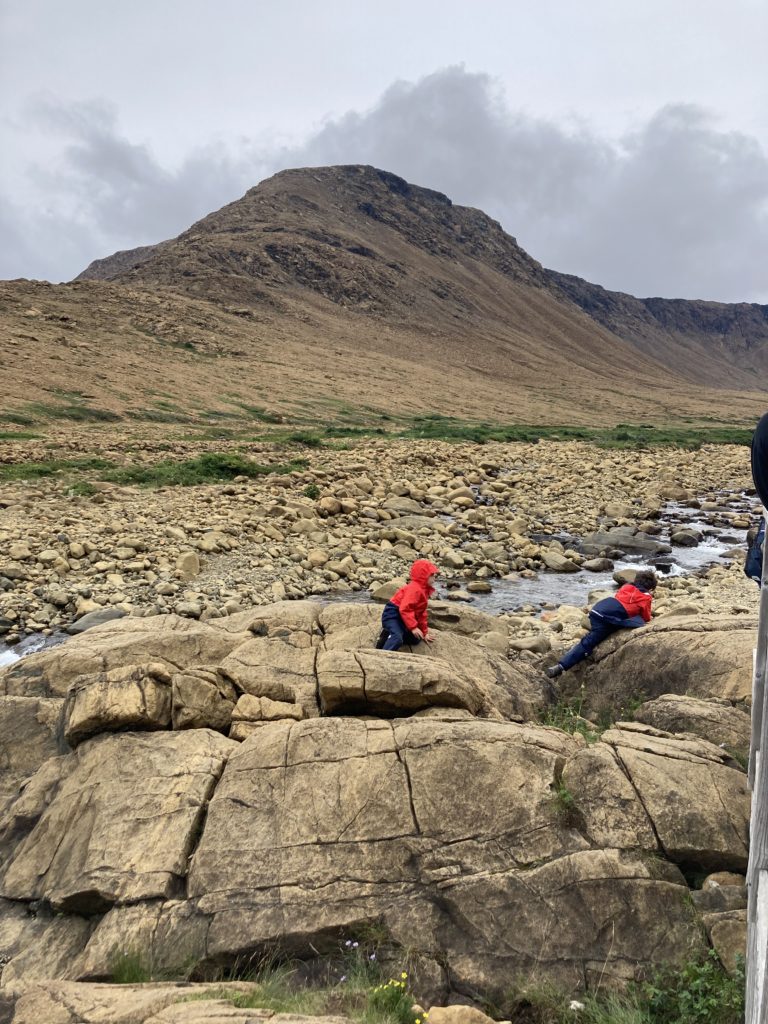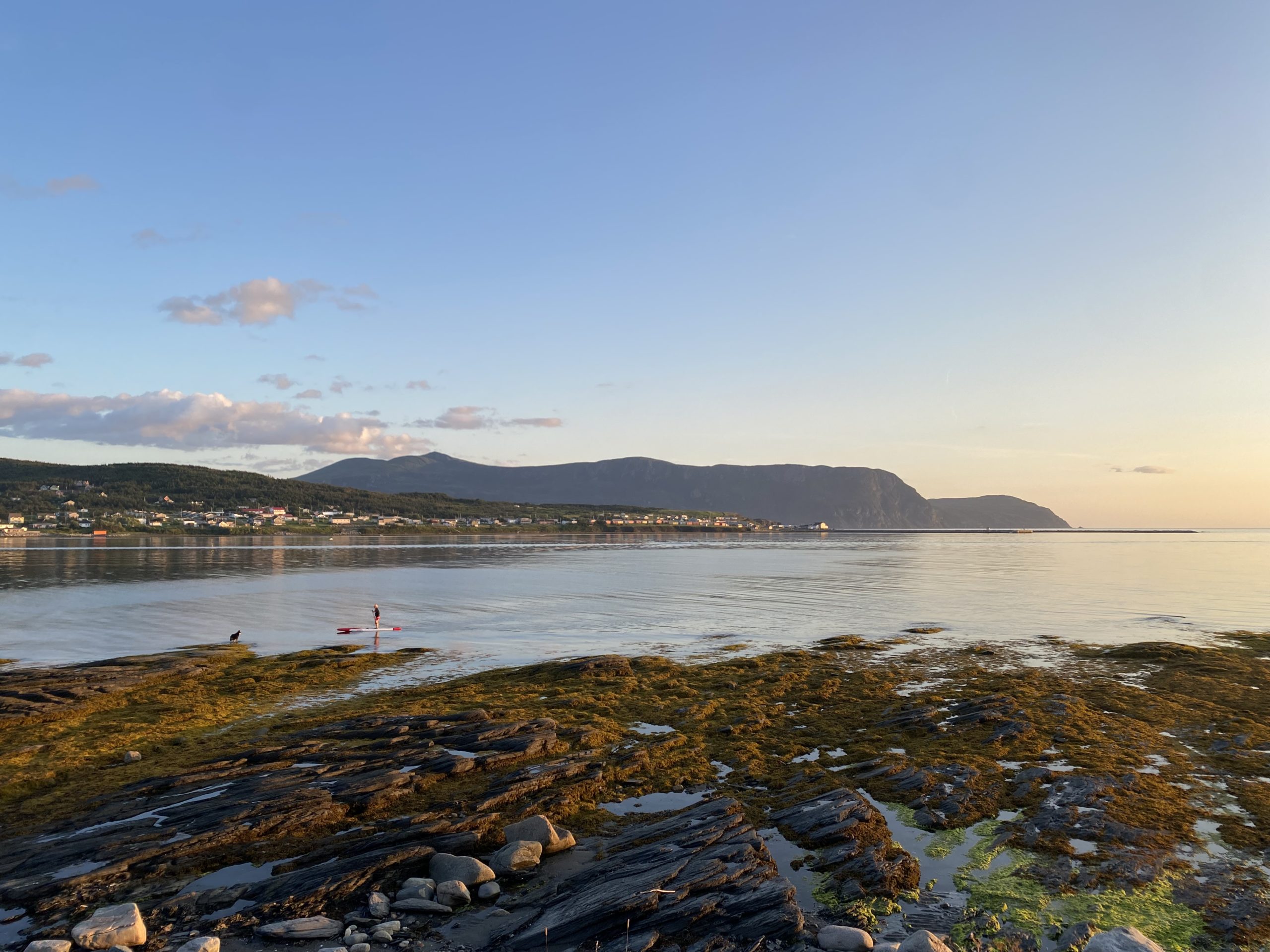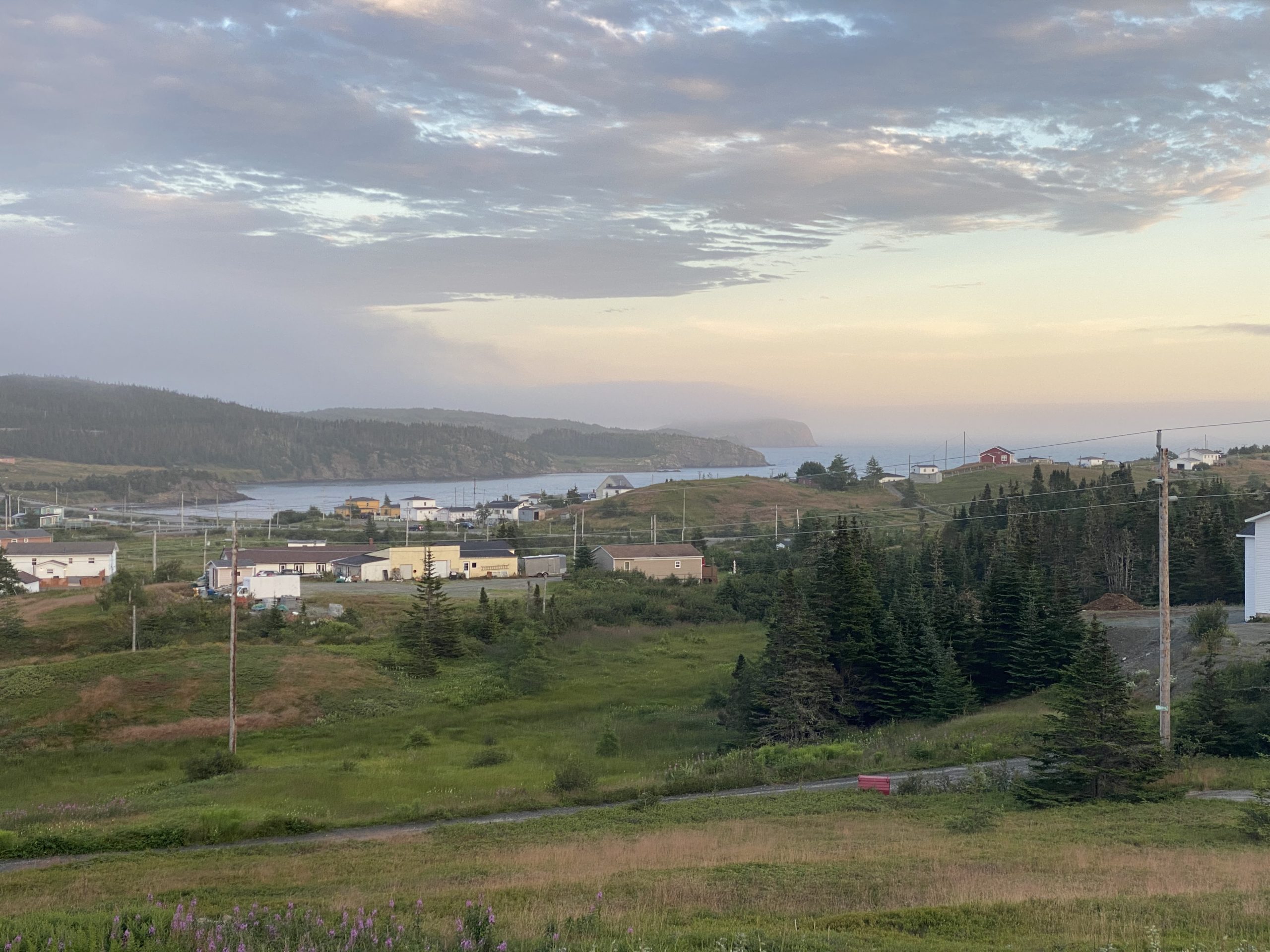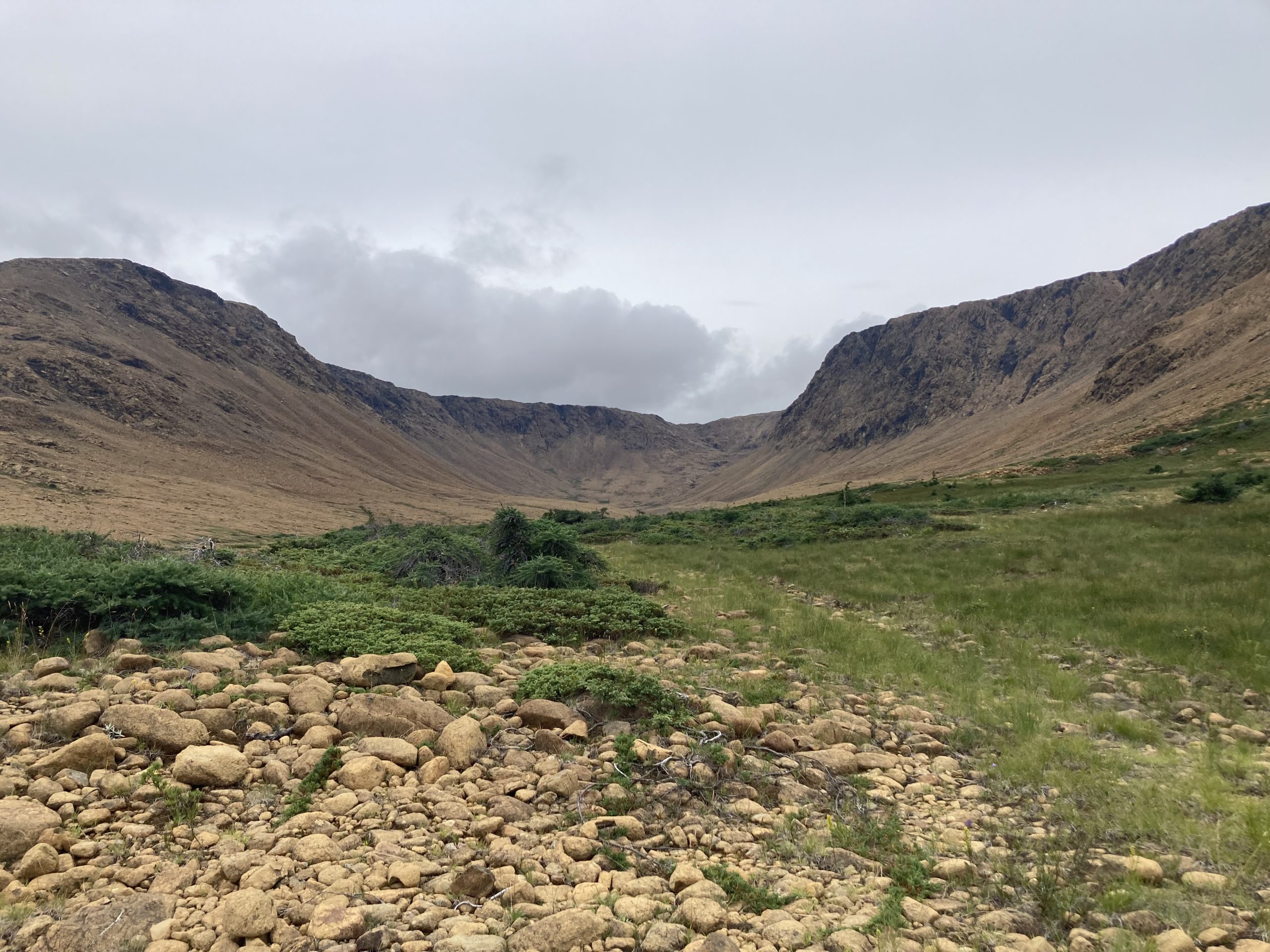
Western Brook Pond gets all the glory of the glamour shots in the Gros Morne tourist brochures, but the Tablelands is probably the more interesting geological feature. This is one of the few places on earth where the Earth’s mantle sits atop its crust (the other places are under water in Oman and the middle of the rainforest in Papua New Guinea — “this is the only one with a parking lot,” quipped our guide.)
The Tablelands is enough of a desolate wasteland that NASA tests out Mars-equipment here because it’s sufficiently similar, even down to the reddish hue of the barren rocks. If you walked the trail on your own, I think it might be so stark as to be underwhelming. But Parks Canada runs free guided tours for park visitors, and our guide was nothing short of brilliant. For over 90 minutes she had a group of 60-odd people totally enthralled with rock formations, plate tectonics, and carnivorous plants. It was a wonderful education in the very specific geology of this corner of the world, and a real highlight of our visit to Gros Morne.
